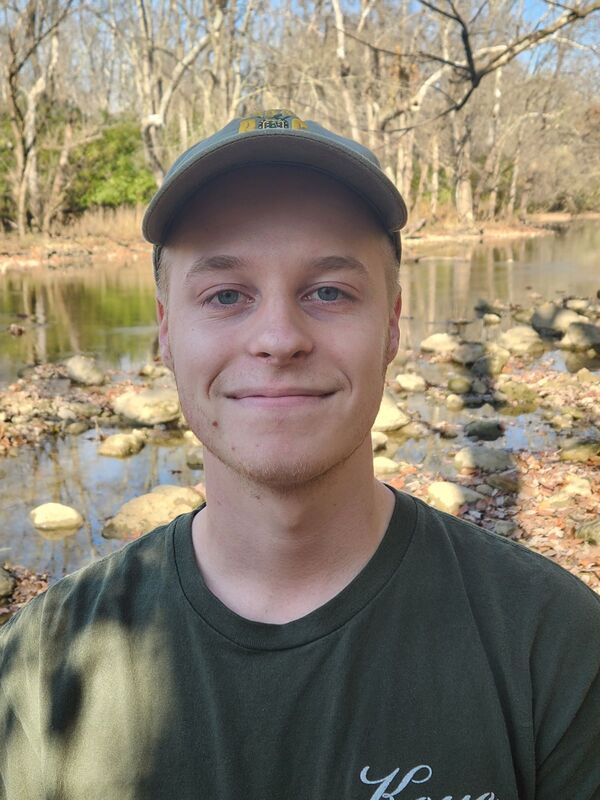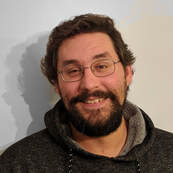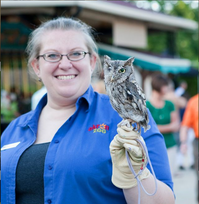WETLAND SCIENCE CONFERENCE
2024 Vernal Poolooza Breakout Sessions
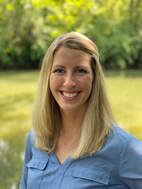
Ohio's Vernal Pool Flora- Jenny Adkins
Get to know the usual floral suspects of Ohio's vernal pools with Jenny Adkins, Lead Botanist as MAD Scientist Associates, and practice woody plant identification.
Jenny Adkins is a Professional Wetland Scientist and the lead Botanist for MAD Scientist Associates. She has over 12 years of experience in the field of ecological restoration, primarily developing and implementing planting plans and running environmental education programs. She holds a BS in biology and a Master of Education from Wright State University. She has led botanical surveys and re-established native plant communities across Ohio and is proud to work with the talented team at MAD Scientist Associates.
Get to know the usual floral suspects of Ohio's vernal pools with Jenny Adkins, Lead Botanist as MAD Scientist Associates, and practice woody plant identification.
Jenny Adkins is a Professional Wetland Scientist and the lead Botanist for MAD Scientist Associates. She has over 12 years of experience in the field of ecological restoration, primarily developing and implementing planting plans and running environmental education programs. She holds a BS in biology and a Master of Education from Wright State University. She has led botanical surveys and re-established native plant communities across Ohio and is proud to work with the talented team at MAD Scientist Associates.
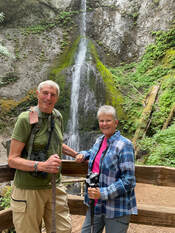
Environmental Education as a Tool for Learning- Paul and Cathy Knoop
As educators, we feel that environmental education can be used as a great tool for learning. It can reach across all learning styles, be used to teach across curriculum, and help children understand written text. Exposing children to the outdoors, using their senses, observing by doing, and learning about the place they live helps make them more aware of the world they live in. As a child learn about the land and its inhabitants, they will start to understand the health of the land and will care about the natural resources, native plant and animal diversity, and develop a sense of place.
Paul Knoop was an environmental educator at the Aullwood Audubon Center and Farm for 35 years. In his retirement, he continues to lead workshops and walks and consults on land preservation.
Cathy Knoop was an elementary science educator and developed Junior Naturalists programs and land labs for her schools. In retirement, she continues to lead teacher workshops and is a trainer for Population Connection.
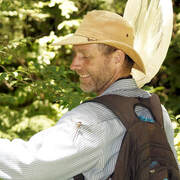
Geological and Landscape History of the Hocking Hills and Crane Hollow Nature Preserve- Joe Moosbrugger
The Hocking Hills region is a beautiful gem in Ohio’s Appalachian region enjoyed by millions of
individuals each year. I am fascinated by both the geological and human history that have affected the current natural landscape and diversity of the Hocking Hills region. When looking at a satellite image of the Hocking Hills, it often appears that all the forests appear in a simple green. At closer inspection changes in elevation, aspect, substrate, and land use history result in forests that are amazingly diverse.
In this keynote, I will delve deeper into the specific history of Crane Hollow Nature Preserve and our mission for the preserve. Special attention will be given to the different types of vernal pools found within Crane Hollow, their origins, and the different assemblages of biota utilizing each.
Originally native to northeastern Ohio, Joe Moosbrugger has always enjoyed the outdoors, even before he knew the names of any salamanders or trees. After graduating from Hiram College, he became a middle school science teacher for several years. Missing the natural world, he switched career tracks and has been fortunate enough to be the Assistant Preserve Manager at Crane Hollow Nature Preserve since 2012.
The Hocking Hills region is a beautiful gem in Ohio’s Appalachian region enjoyed by millions of
individuals each year. I am fascinated by both the geological and human history that have affected the current natural landscape and diversity of the Hocking Hills region. When looking at a satellite image of the Hocking Hills, it often appears that all the forests appear in a simple green. At closer inspection changes in elevation, aspect, substrate, and land use history result in forests that are amazingly diverse.
In this keynote, I will delve deeper into the specific history of Crane Hollow Nature Preserve and our mission for the preserve. Special attention will be given to the different types of vernal pools found within Crane Hollow, their origins, and the different assemblages of biota utilizing each.
Originally native to northeastern Ohio, Joe Moosbrugger has always enjoyed the outdoors, even before he knew the names of any salamanders or trees. After graduating from Hiram College, he became a middle school science teacher for several years. Missing the natural world, he switched career tracks and has been fortunate enough to be the Assistant Preserve Manager at Crane Hollow Nature Preserve since 2012.
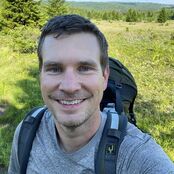
Amphibians on the Map: Merging Tech & Nature to Uncover Hidden Breeding Sites- Aaron Laver
This talk delves into the transformative power of Geographic Information Systems (GIS) in the realm of amphibian conservation. By seamlessly integrating advanced technology with intricate ecological knowledge, this presentation will illuminate the vast potential for uncovering previously unknown breeding habitats. Attendees will be taken on a journey that bridges the gap between the digital world and the natural environment, showcasing how innovative mapping techniques can be a game-changer in supporting amphibian populations and ensuring their future survival.
Aaron Laver is cofounder and CTO of GEOACE. He is passionate about helping organizations harness the power of location with the end goals of increasing operational efficiency and sustainable practices. He is a Certified Ecologist with a thirst for technology and a love of open data and fully open source software for geospatial (FOSS4G).
This talk delves into the transformative power of Geographic Information Systems (GIS) in the realm of amphibian conservation. By seamlessly integrating advanced technology with intricate ecological knowledge, this presentation will illuminate the vast potential for uncovering previously unknown breeding habitats. Attendees will be taken on a journey that bridges the gap between the digital world and the natural environment, showcasing how innovative mapping techniques can be a game-changer in supporting amphibian populations and ensuring their future survival.
Aaron Laver is cofounder and CTO of GEOACE. He is passionate about helping organizations harness the power of location with the end goals of increasing operational efficiency and sustainable practices. He is a Certified Ecologist with a thirst for technology and a love of open data and fully open source software for geospatial (FOSS4G).

Biotic Takeaways: General findings from an amphibian relocation project- Jenna Roller-Knapp
Jenna will share efforts made and findings of an amphibian relocation effort. This relocation took place from a forested vernal pool to established vernal pools and restored wetlands in Richland County, Ohio due to landfill expansion. This project was conducted over two years (2020-2021) during the rise of the pandemic. Drift fences, funnel traps, and coverboards were primarily used to collect wildlife. Come see general trends and takeaways, such as how many of which species were found from which collection method.
Jenna Roller-Knapp is an aquatic ecologist and has worked with MAD Scientist Associates for six years. She specializes in water quality and aquatic biota sampling, including macroinvertebrates, amphibians, fishes and freshwater mussels. She gained her undergraduate degree in Biology from the University of Wisconsin- River Fall, worked for the Minnesota DNR with the stream habitat program, and obtained her Masters from the Ohio State University while researching aquatic assemblages in Lake Erie wetlands.
Jenna will share efforts made and findings of an amphibian relocation effort. This relocation took place from a forested vernal pool to established vernal pools and restored wetlands in Richland County, Ohio due to landfill expansion. This project was conducted over two years (2020-2021) during the rise of the pandemic. Drift fences, funnel traps, and coverboards were primarily used to collect wildlife. Come see general trends and takeaways, such as how many of which species were found from which collection method.
Jenna Roller-Knapp is an aquatic ecologist and has worked with MAD Scientist Associates for six years. She specializes in water quality and aquatic biota sampling, including macroinvertebrates, amphibians, fishes and freshwater mussels. She gained her undergraduate degree in Biology from the University of Wisconsin- River Fall, worked for the Minnesota DNR with the stream habitat program, and obtained her Masters from the Ohio State University while researching aquatic assemblages in Lake Erie wetlands.
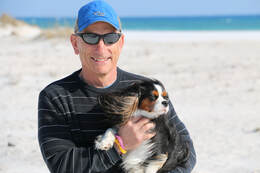
Vernal Pool Amphibians, their evolution, and current status- Mick Micacchion
This presentation involves amphibians and their process of evolution over the past 325 million years. It will focus on the major changes that led to vernal pool amphibian species and how over the years they have adapted to live in and around their vernal pool wetland homes. There will also be a good amount of discussion about some of the other amphibian species that stood out over the years as they had some really interesting evolutionary pathways. I will talk about their pathways that went many different ways, and how each developed their distinct diversity in body adaptations to survive and support their specific habitat features.
I grew up loving the outdoors and all its adorable, incredible, and numerous plant and animal species. This included exploring the vernal pools that were present near my childhood home. I came to love vernal pools, and all their species, both fauna and flora, as well as the unforgettable and beautiful sounds the frogs and toads made in spring. Seeing frog, toad, and salamander eggs laid within the vernal pools has also been a great pleasure and had me returning to the pools every spring to see the egg masses there and then the long awaited hatching out of tadpoles and salamander larvae.. When I went to college I decided I wanted to be a Wildlife Biologist and I received both a bachelor and master's degree in Wildlife Management from Ohio State University. After college, I worked ten years as Crew Leader and then Camp Manager of the Ohio Department of Natural Resources, Columbus Civilian Conservation Corps Camp whose office and workshop were located on the Ohio State Fairgrounds. In my time with CCC I visited many different parks, natural areas, and other public lands that needed their habitats, buildings, or other parts of their facilities, attended to and improved. We did that for many agencies reaiiy did some great projects. While working for the CCC I was chosen as the ODNR Employee of the month and later my entire camp was chosen as the ODNR employees of another month.
After my time with CCC, I was employed by the Ohio Environmental Protection Agency as a Section 401 coordinator, then a Wetland Ecologist. I worked with a fair sized group of people and we developed Wetland Water Quality standards for the State of Ohio. Afterwards, the Ohio EPA developed the Wetland Ecology Group, of which I was a member, and we put together several different tools to determine the quality of wetlands. These tools included the Ohio Rapid Assessment Method (ORAM) for Wetlands, the Vegetation Index of Biotic Integrity (VIBI), and the Amphibian Index of Biotic Integrity (AmphIBI). I worked 20 years for the Ohio EPA and then worked for the Midwest Biology Institution as a wetland biologist and as well as many other projects developed a wetland training program to increase the understanding of wetlands and the tools used in Ohio to access and protect them. At MBI, I led crews and worked on the 2011 and 2016 US EPA's National Wetland Assessment. While still instructing courses for MBI, I then started working for The Nature Conservancy helping them to get their wetland and stream mitigation program on the ground. I retired in 2020, and in 2022 I was presented with a Nationwide award from the Environmental Law Institute for Wetlands Program Development in Ohio.
This presentation involves amphibians and their process of evolution over the past 325 million years. It will focus on the major changes that led to vernal pool amphibian species and how over the years they have adapted to live in and around their vernal pool wetland homes. There will also be a good amount of discussion about some of the other amphibian species that stood out over the years as they had some really interesting evolutionary pathways. I will talk about their pathways that went many different ways, and how each developed their distinct diversity in body adaptations to survive and support their specific habitat features.
I grew up loving the outdoors and all its adorable, incredible, and numerous plant and animal species. This included exploring the vernal pools that were present near my childhood home. I came to love vernal pools, and all their species, both fauna and flora, as well as the unforgettable and beautiful sounds the frogs and toads made in spring. Seeing frog, toad, and salamander eggs laid within the vernal pools has also been a great pleasure and had me returning to the pools every spring to see the egg masses there and then the long awaited hatching out of tadpoles and salamander larvae.. When I went to college I decided I wanted to be a Wildlife Biologist and I received both a bachelor and master's degree in Wildlife Management from Ohio State University. After college, I worked ten years as Crew Leader and then Camp Manager of the Ohio Department of Natural Resources, Columbus Civilian Conservation Corps Camp whose office and workshop were located on the Ohio State Fairgrounds. In my time with CCC I visited many different parks, natural areas, and other public lands that needed their habitats, buildings, or other parts of their facilities, attended to and improved. We did that for many agencies reaiiy did some great projects. While working for the CCC I was chosen as the ODNR Employee of the month and later my entire camp was chosen as the ODNR employees of another month.
After my time with CCC, I was employed by the Ohio Environmental Protection Agency as a Section 401 coordinator, then a Wetland Ecologist. I worked with a fair sized group of people and we developed Wetland Water Quality standards for the State of Ohio. Afterwards, the Ohio EPA developed the Wetland Ecology Group, of which I was a member, and we put together several different tools to determine the quality of wetlands. These tools included the Ohio Rapid Assessment Method (ORAM) for Wetlands, the Vegetation Index of Biotic Integrity (VIBI), and the Amphibian Index of Biotic Integrity (AmphIBI). I worked 20 years for the Ohio EPA and then worked for the Midwest Biology Institution as a wetland biologist and as well as many other projects developed a wetland training program to increase the understanding of wetlands and the tools used in Ohio to access and protect them. At MBI, I led crews and worked on the 2011 and 2016 US EPA's National Wetland Assessment. While still instructing courses for MBI, I then started working for The Nature Conservancy helping them to get their wetland and stream mitigation program on the ground. I retired in 2020, and in 2022 I was presented with a Nationwide award from the Environmental Law Institute for Wetlands Program Development in Ohio.
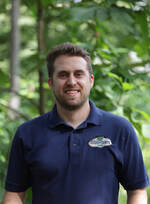
Vernal Pools, Oak-dominated Forests, and Ohio’s Forest Action Plan- Tom Macy
Forest tree species composition greatly influences habitat quality and wildlife communities. This also holds true for amphibian inhabitants of vernal pools. This presentation will highlight the influence of forest tree species composition on vernal pool communities, the colonization and utilization of constructed vernal pools in forest habitats, the ecological and economic importance of oaks in Ohio’s forests, the factors causing changes in Ohio’s forest tree species composition, and how that issue is addressed in Ohio’s Forest Action Plan.
Tom Macy has been the Forest Health Program Manager for the Ohio DNR Division of Forestry since 2013. Prior to that, he worked as a Land Management Forester, and has worked previously for the USDA Forest Service Northern Research Station assisting with research on the impacts of emerald ash borer on Ohio’s forests. In his current role, he coordinates the monitoring, surveying, and management of various insect, disease, and invasive species pests affecting Ohio’s forests and trees, as well as education and outreach. Tom earned his Bachelor’s and Master’s degrees in Forest Science from Ohio State University.
Forest tree species composition greatly influences habitat quality and wildlife communities. This also holds true for amphibian inhabitants of vernal pools. This presentation will highlight the influence of forest tree species composition on vernal pool communities, the colonization and utilization of constructed vernal pools in forest habitats, the ecological and economic importance of oaks in Ohio’s forests, the factors causing changes in Ohio’s forest tree species composition, and how that issue is addressed in Ohio’s Forest Action Plan.
Tom Macy has been the Forest Health Program Manager for the Ohio DNR Division of Forestry since 2013. Prior to that, he worked as a Land Management Forester, and has worked previously for the USDA Forest Service Northern Research Station assisting with research on the impacts of emerald ash borer on Ohio’s forests. In his current role, he coordinates the monitoring, surveying, and management of various insect, disease, and invasive species pests affecting Ohio’s forests and trees, as well as education and outreach. Tom earned his Bachelor’s and Master’s degrees in Forest Science from Ohio State University.
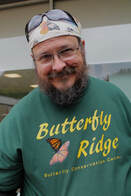
The Relationship Between Vernal Pools and Lepidoptera- Christopher Kline
The relationship between vernal pools and butterflies and moths is truly mutualistic. Learn more about how lepidoptera pollinate pool plants and how those same plants provide important homes for butterflies and moths.
Christopher Kline’s interest in butterflies began in 1997 when he began tagging Monarch butterflies in Indiana. Since 1997, he has tagged thousands of Monarchs, co-founded the Central Arizona Butterfly Association, and founded the Southwest Monarch Study. He has also served as the Butterfly Specialist at the Franklin Park Conservatory and Botanical Gardens in Columbus, Ohio.
He now is the Director of Butterfly Ridge Butterfly Conservation Center in Rockbridge, Ohio where he and his wife have converted 21 acres of fields and forests into butterfly friendly habitats and have quintupled the butterfly population in the process. He has authored several books including A Field Guide to Tropical Butterflies of American Conservatories, Butterfly Gardening with Native Plants, Butterfly Rider, Moths of Butterfly Ridge, and the Beginner’s Guide to Mothing.
The relationship between vernal pools and butterflies and moths is truly mutualistic. Learn more about how lepidoptera pollinate pool plants and how those same plants provide important homes for butterflies and moths.
Christopher Kline’s interest in butterflies began in 1997 when he began tagging Monarch butterflies in Indiana. Since 1997, he has tagged thousands of Monarchs, co-founded the Central Arizona Butterfly Association, and founded the Southwest Monarch Study. He has also served as the Butterfly Specialist at the Franklin Park Conservatory and Botanical Gardens in Columbus, Ohio.
He now is the Director of Butterfly Ridge Butterfly Conservation Center in Rockbridge, Ohio where he and his wife have converted 21 acres of fields and forests into butterfly friendly habitats and have quintupled the butterfly population in the process. He has authored several books including A Field Guide to Tropical Butterflies of American Conservatories, Butterfly Gardening with Native Plants, Butterfly Rider, Moths of Butterfly Ridge, and the Beginner’s Guide to Mothing.
Education Outreach at Camp Oty’Okwa: The Link Between Transportation and the Environment- Brooke Heid and Marcus Moan
This presentation will provide an overview of the development of a new curriculum at Camp Oty’Okwa designed to inform campers about the relationship between the environment and transportation projects. On the inspiring grounds of Camp Oty’Okwa, campers and environmental experts from the Ohio Department of Transportation and qualified consultants carried out hands-on activities modeled after actual preliminary environmental studies performed for transportation projects.
Brooke Heid, NEPA Project Manager, Clune Consulting Services
Brooke Heid is a project manager with over 10 years of experience as an environmental consultant on transportation projects. She has a Bachelor of Arts degree in Environmental Policy from Bowling Green State University and has worked with Clune Consulting Services for the past 7 years. Her hobbies include fishing, kayaking and keeping up with her two young daughters.
Marcus Moan, Environmental Specialist, Clune Consulting Services
Marcus Moan graduated from The Ohio State University in May 2023 with a BS in Evolution & Ecology, and works as an Environmental Specialist with Clune Consulting Services. Prior to working with CCS, Marcus worked in environmental outreach education with Franklin Park Conservatory, presenting education programs to Columbus City Schools students and Columbus residents. Marcus is interested in invasive plant ecology, birding, and rubber ducks.
This presentation will provide an overview of the development of a new curriculum at Camp Oty’Okwa designed to inform campers about the relationship between the environment and transportation projects. On the inspiring grounds of Camp Oty’Okwa, campers and environmental experts from the Ohio Department of Transportation and qualified consultants carried out hands-on activities modeled after actual preliminary environmental studies performed for transportation projects.
Brooke Heid, NEPA Project Manager, Clune Consulting Services
Brooke Heid is a project manager with over 10 years of experience as an environmental consultant on transportation projects. She has a Bachelor of Arts degree in Environmental Policy from Bowling Green State University and has worked with Clune Consulting Services for the past 7 years. Her hobbies include fishing, kayaking and keeping up with her two young daughters.
Marcus Moan, Environmental Specialist, Clune Consulting Services
Marcus Moan graduated from The Ohio State University in May 2023 with a BS in Evolution & Ecology, and works as an Environmental Specialist with Clune Consulting Services. Prior to working with CCS, Marcus worked in environmental outreach education with Franklin Park Conservatory, presenting education programs to Columbus City Schools students and Columbus residents. Marcus is interested in invasive plant ecology, birding, and rubber ducks.
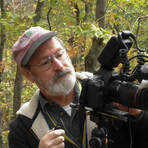
Moss Identification and Ecology- Robert Klips
Mosses are distinctive and delightful seedless plants found in nearly every terrestrial ecosystem, including vernal pools. However, because of their small size, mosses are too frequently overlooked by field botanists. Using hand lenses, microscopes and identification keys, participants will examine specimens found on site, gaining the ability to recognize about a dozen common species and acquiring the skills necessary to independently continue the study of mosses. Sampling and specimen preservation will also be addressed.
Robert Klips is an associate professor emeritus in the Department of Evolution, Ecology, and Organismal Biology at Ohio State University (OSU). He currently manages the bryophyte and lichen specimen collections in the herbarium at OSU’s Museum of Biological Diversity. Skilled in botanical macrophotography, Klips served as the photographer for the Ohio Division of Wildlife’s 2017 Common Lichens of Ohio Field Guide and is the author of the book Common Mosses, Liverworts and Lichens of Ohio, published by the Ohio University Press in 2022. He frequently conducts field work and educates nature study groups about the identification, ecology, and distribution of Ohio plants and lichens.
Mosses are distinctive and delightful seedless plants found in nearly every terrestrial ecosystem, including vernal pools. However, because of their small size, mosses are too frequently overlooked by field botanists. Using hand lenses, microscopes and identification keys, participants will examine specimens found on site, gaining the ability to recognize about a dozen common species and acquiring the skills necessary to independently continue the study of mosses. Sampling and specimen preservation will also be addressed.
Robert Klips is an associate professor emeritus in the Department of Evolution, Ecology, and Organismal Biology at Ohio State University (OSU). He currently manages the bryophyte and lichen specimen collections in the herbarium at OSU’s Museum of Biological Diversity. Skilled in botanical macrophotography, Klips served as the photographer for the Ohio Division of Wildlife’s 2017 Common Lichens of Ohio Field Guide and is the author of the book Common Mosses, Liverworts and Lichens of Ohio, published by the Ohio University Press in 2022. He frequently conducts field work and educates nature study groups about the identification, ecology, and distribution of Ohio plants and lichens.
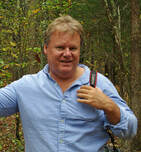
A Camera’s Eye View of Vernal Pools - Jim McCormac
For many naturalists, the sudden eruption of life in Ohio’s vernal pools is the true coming of spring. Commencing in late February or early March, ephemeral pools explode in a frenzy of often clamorous breeding amphibians. Spring Peepers and Western Chorus Frogs fill the air with their calls, and mole salamanders emerge from the ground to temporarily inhabit the wetlands. Many other strange organisms such as Fairy Shrimp, Little Brown Mudbugs, and Predaceous Diving Beetles join the fray. Even owls get in on the act, picking off slow-moving amphibians. This talk will be a pictorial essay on the amazing fauna and flora of Ohio’s vernal pools.
Jim worked for the Ohio Department of Natural Resources for 31 years as a botanist, and later
specializing in wildlife diversity projects, especially involving birds. He has authored or coauthored seven books, including Birds of Ohio (Lone Pine 2004); and Wild Ohio: The Best of Our Natural Heritage (Kent State University Press 2009). The latter won the 2010 Ohioana Book award. He is a coauthor of the Ohio Breeding Bird Atlas II book. His latest book, coauthored with Chelsea Gottfried, is Gardening for Moths (Ohio University Press 2023). Jim writes a column, Nature, for the Columbus Dispatch, and regularly publishes a natural history blog. He has written numerous articles in a variety of publications, and has delivered hundreds of presentations throughout the eastern United States. He was named 2015 Conservation Communicator of the Year by the Ohio League of Sportsmen. Jim is an avid photographer, shooting a range of natural history subjects. He has had hundreds of photos published in various forums. His photography can be sampled at https://www.jimmccormac.com/
For many naturalists, the sudden eruption of life in Ohio’s vernal pools is the true coming of spring. Commencing in late February or early March, ephemeral pools explode in a frenzy of often clamorous breeding amphibians. Spring Peepers and Western Chorus Frogs fill the air with their calls, and mole salamanders emerge from the ground to temporarily inhabit the wetlands. Many other strange organisms such as Fairy Shrimp, Little Brown Mudbugs, and Predaceous Diving Beetles join the fray. Even owls get in on the act, picking off slow-moving amphibians. This talk will be a pictorial essay on the amazing fauna and flora of Ohio’s vernal pools.
Jim worked for the Ohio Department of Natural Resources for 31 years as a botanist, and later
specializing in wildlife diversity projects, especially involving birds. He has authored or coauthored seven books, including Birds of Ohio (Lone Pine 2004); and Wild Ohio: The Best of Our Natural Heritage (Kent State University Press 2009). The latter won the 2010 Ohioana Book award. He is a coauthor of the Ohio Breeding Bird Atlas II book. His latest book, coauthored with Chelsea Gottfried, is Gardening for Moths (Ohio University Press 2023). Jim writes a column, Nature, for the Columbus Dispatch, and regularly publishes a natural history blog. He has written numerous articles in a variety of publications, and has delivered hundreds of presentations throughout the eastern United States. He was named 2015 Conservation Communicator of the Year by the Ohio League of Sportsmen. Jim is an avid photographer, shooting a range of natural history subjects. He has had hundreds of photos published in various forums. His photography can be sampled at https://www.jimmccormac.com/
|
FrogWatch USA: Who, What, When, Where, Why? by Carrie Bassett and Michael Phillips
Description: FrogWatch USA is a great community science program for vernal pools (and other wetlands, of course), but what do you know about it? Join us to discuss this amazing program to help engage people in frog conservation and knowledge. We will talk about FrogWatch USA's new home, some of the data that has been collected, as well as the W's of the program. So come ready to learn about everything FrogWatch USA! Carrie Bassett is the National Coordinator for FrogWatch USA and the Education Mission Manager at the Akron Zoo. She has worked at the zoo since 2005 in various positions. She has a BA in Biology with an emphasis in Secondary Education. Michael Phillips has a BA in Biology and a BA in Environmental Science. He has worked at various parks and zoos, including Cuyahoga Valley National Park, Stark Parks, and the Akron Zoo, for over 15 years. He is a certified coordinator of FrogWatch USA. |
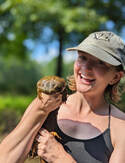
The Story of the Salamander- Hannah “Dusty” Kopp
Follow the origin story of salamanders throughout the eons and into the Anthropocene. We will discuss both the evolutionary history of salamanders as well as their significance and representation in different cultures from around the globe.
Dusty is a lifelong lover of the slimy, the creeping, and the crawling critters of the world. Little excites them more than seeing salamanders in their natural setting and sharing that experience with others. They have an education in Wildlife Resources Management (Hocking College) and Natural Resources Conservation (Ohio University), conducted fieldwork with critters from butterflies to bobcats, and spent the last four years with Rural Action's Watershed Program. Their goal is to build resilient communities through direct conservation efforts and connecting people with their own ecology, one salamander at a time.
Follow the origin story of salamanders throughout the eons and into the Anthropocene. We will discuss both the evolutionary history of salamanders as well as their significance and representation in different cultures from around the globe.
Dusty is a lifelong lover of the slimy, the creeping, and the crawling critters of the world. Little excites them more than seeing salamanders in their natural setting and sharing that experience with others. They have an education in Wildlife Resources Management (Hocking College) and Natural Resources Conservation (Ohio University), conducted fieldwork with critters from butterflies to bobcats, and spent the last four years with Rural Action's Watershed Program. Their goal is to build resilient communities through direct conservation efforts and connecting people with their own ecology, one salamander at a time.
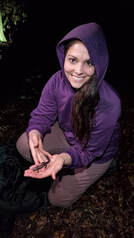
Vernal Pool Program Station Rotation- Liz Neroni
This interactive session is for educators looking for ideas on how to connect with their audience to these amazing temporary aquatic habitats without being able to visit an actual vernal pool. Participants will be led through different programs that they can then take back to their communities. Whether through the lens of a microscope, by getting crafty, or even playing some hands-on activities, we will unveil the importance of vernal pools, define their
unique characteristics, and explore the organisms found within them.
After graduating from Hocking College with a Natural and Historical Interpretation degree and working for the Maryland Park Service, Liz Neroni was offered a full-time position as a Naturalist for Preservation Parks of Delaware County, which is a metro park system located in central Ohio. She has worked there for over 11 years, presenting programs, designing annual exhibits, and managing the care of the animal ambassadors.
This interactive session is for educators looking for ideas on how to connect with their audience to these amazing temporary aquatic habitats without being able to visit an actual vernal pool. Participants will be led through different programs that they can then take back to their communities. Whether through the lens of a microscope, by getting crafty, or even playing some hands-on activities, we will unveil the importance of vernal pools, define their
unique characteristics, and explore the organisms found within them.
After graduating from Hocking College with a Natural and Historical Interpretation degree and working for the Maryland Park Service, Liz Neroni was offered a full-time position as a Naturalist for Preservation Parks of Delaware County, which is a metro park system located in central Ohio. She has worked there for over 11 years, presenting programs, designing annual exhibits, and managing the care of the animal ambassadors.
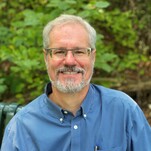
Vernal Pool Functions and Values- Mark Dilley
Mark will discuss the variable hydrology, habitat features, and plant and animal communities in vernal pools that make them essential in many ways.
Mark A. Dilley is the Chief Scientist at MAD Scientist Associates. He is a Professional Wetland Scientist (Society of Wetland Scientists) and Certified Senior Ecologist (Ecological Society of America) with over 25 years of experience in wetland science, field biology, ecology, and environmental studies. Through Ohio EPA's QDC program, Mark is certified for Level 3 fish studies and habitat assessments for biological monitoring of wadable streams and rivers. He has worked on projects in 25 states but focuses his efforts on his home state of Ohio. (Make the sustainable choice: Hire locally-grown consultants!). Mark received his B.S. in Natural Resources in Fisheries Management and his M.S. in Environmental Science from The Ohio State University, emphasizing wetlands. His thesis research (Atrazine Fate and Transport in a Created Flow-through Emergent Marsh: An Examination of Key Processes) was completed at the internationally acclaimed Olentangy River Wetland Research Park at OSU. Mark has continued his connection with OSU as a lecturer for the Wetland Ecology and Restoration course since 2012.
Mark will discuss the variable hydrology, habitat features, and plant and animal communities in vernal pools that make them essential in many ways.
Mark A. Dilley is the Chief Scientist at MAD Scientist Associates. He is a Professional Wetland Scientist (Society of Wetland Scientists) and Certified Senior Ecologist (Ecological Society of America) with over 25 years of experience in wetland science, field biology, ecology, and environmental studies. Through Ohio EPA's QDC program, Mark is certified for Level 3 fish studies and habitat assessments for biological monitoring of wadable streams and rivers. He has worked on projects in 25 states but focuses his efforts on his home state of Ohio. (Make the sustainable choice: Hire locally-grown consultants!). Mark received his B.S. in Natural Resources in Fisheries Management and his M.S. in Environmental Science from The Ohio State University, emphasizing wetlands. His thesis research (Atrazine Fate and Transport in a Created Flow-through Emergent Marsh: An Examination of Key Processes) was completed at the internationally acclaimed Olentangy River Wetland Research Park at OSU. Mark has continued his connection with OSU as a lecturer for the Wetland Ecology and Restoration course since 2012.
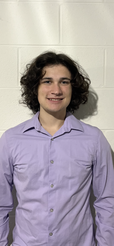
Developing PCR Testing Techniques to Identify Unisexual Salamander Populations- Logan Griffin
In early spring 2023, Hiram College's field station workers conducted vernal pool surveys, focusing on the unique Unisexual Ambystoma salamanders. These all-female salamanders utilize kleptogenesis, stealing sperm to initiate egg production and possessing the rare ability to choose whether to clone themselves or modify their DNA with the stolen genetic material. Distinguishing them visually from sexually reproducing counterparts is challenging, requiring genetic testing. To address this, my research, in collaboration with Dr. Brad Goodner, has developed a cost-effective PCR testing method that rapidly identifies the sexual identity of salamanders, eliminating the need for outsourcing. This streamlined approach facilitates broader exploration of the species' ecological role, genetic diversity, and the intricacies of polyploid organisms within the field station and the states at large.
Logan Griffin is currently enrolled at Hiram College, pursuing a Biology and Environmental Studies double major. Now in his junior year, Logan has spent much of his time at Hiram working at the James H. Barrow Biological Field Station working in wildlife rehabilitation and pursuing independent research. Continuing the work of other students, Logan has taken a keen interest in the terrestrial salamanders at Hiram and the important role they serve in the ecosystem. Working alongside other student workers, the Field Station has been conducting vernal pool surveys to gather information on their own population of Unisexual Ambystoma. Working alongside professors and pursuing relevant coursework both in and out of Hiram, Logan hopes to contribute more to the increasing literature on Unisexual Ambystoma and the importance of amphibians as a whole.
Jim Lane will be talking about making 500 photographs of 100 species, many of them yards away from where we will be sitting at Camp Oty'okwa. His discussion will center on several vernal pool species and include some interesting things to see and hear about. Jim considers himself an “all taxa” wildlife photographer. He makes a point of getting the entire life cycle of species we know well, but often only see in one setting, one phase of life or one spot. He will also discuss why he really wrote the book.
Jim Lane is an award-winning Central Ohio wildlife photographer, naturalist, and author. The son of an amateur nature photographer, Lane emphasizes the importance of family in the appreciation of nature. While he has been to remote locales like Galapagos and the Caribbean, he is best known for his dozens of photographic articles on wildlife you don’t have to travel to appreciate. He offers an in-depth, multi-season look at what is right in front of us and often overlooked. His art graces homes across the country and you can find it @jblane001 on Instagram.
In early spring 2023, Hiram College's field station workers conducted vernal pool surveys, focusing on the unique Unisexual Ambystoma salamanders. These all-female salamanders utilize kleptogenesis, stealing sperm to initiate egg production and possessing the rare ability to choose whether to clone themselves or modify their DNA with the stolen genetic material. Distinguishing them visually from sexually reproducing counterparts is challenging, requiring genetic testing. To address this, my research, in collaboration with Dr. Brad Goodner, has developed a cost-effective PCR testing method that rapidly identifies the sexual identity of salamanders, eliminating the need for outsourcing. This streamlined approach facilitates broader exploration of the species' ecological role, genetic diversity, and the intricacies of polyploid organisms within the field station and the states at large.
Logan Griffin is currently enrolled at Hiram College, pursuing a Biology and Environmental Studies double major. Now in his junior year, Logan has spent much of his time at Hiram working at the James H. Barrow Biological Field Station working in wildlife rehabilitation and pursuing independent research. Continuing the work of other students, Logan has taken a keen interest in the terrestrial salamanders at Hiram and the important role they serve in the ecosystem. Working alongside other student workers, the Field Station has been conducting vernal pool surveys to gather information on their own population of Unisexual Ambystoma. Working alongside professors and pursuing relevant coursework both in and out of Hiram, Logan hopes to contribute more to the increasing literature on Unisexual Ambystoma and the importance of amphibians as a whole.
Jim Lane will be talking about making 500 photographs of 100 species, many of them yards away from where we will be sitting at Camp Oty'okwa. His discussion will center on several vernal pool species and include some interesting things to see and hear about. Jim considers himself an “all taxa” wildlife photographer. He makes a point of getting the entire life cycle of species we know well, but often only see in one setting, one phase of life or one spot. He will also discuss why he really wrote the book.
Jim Lane is an award-winning Central Ohio wildlife photographer, naturalist, and author. The son of an amateur nature photographer, Lane emphasizes the importance of family in the appreciation of nature. While he has been to remote locales like Galapagos and the Caribbean, he is best known for his dozens of photographic articles on wildlife you don’t have to travel to appreciate. He offers an in-depth, multi-season look at what is right in front of us and often overlooked. His art graces homes across the country and you can find it @jblane001 on Instagram.
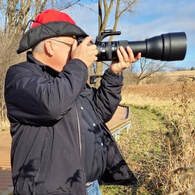
Our Ohio Wildlife-Jim Lane
Jim Lane will be talking about making 500 photographs of 100 species, many of them just yards away from where we will be sitting at Camp Oty'okwa. His discussion will center on several vernal pool species and include some others that are interesting to see and hear about. Jim considers himself an “all taxa” wildlife photographer. He makes a point of getting the entire lifecycle of species we know well, but often only see in one setting, one phase of life or one spot. He will also discuss why he really wrote the book. Jim Lane is a Central Ohio award-winning wildlife photographer, naturalist and author. The son of an amateur nature photographer, Lane emphasizes the importance of family in the appreciation of nature. While he has been to remote locales like Galapagos and the Caribbean, he is best known for his dozens of photographic articles on wildlife you don’t have to travel to appreciate. He offers an in-depth, multi-season look at what is right in front of us and often overlooked. His art graces homes across the country and you can find it @jblane001 on Instagram.
Jim Lane will be talking about making 500 photographs of 100 species, many of them just yards away from where we will be sitting at Camp Oty'okwa. His discussion will center on several vernal pool species and include some others that are interesting to see and hear about. Jim considers himself an “all taxa” wildlife photographer. He makes a point of getting the entire lifecycle of species we know well, but often only see in one setting, one phase of life or one spot. He will also discuss why he really wrote the book. Jim Lane is a Central Ohio award-winning wildlife photographer, naturalist and author. The son of an amateur nature photographer, Lane emphasizes the importance of family in the appreciation of nature. While he has been to remote locales like Galapagos and the Caribbean, he is best known for his dozens of photographic articles on wildlife you don’t have to travel to appreciate. He offers an in-depth, multi-season look at what is right in front of us and often overlooked. His art graces homes across the country and you can find it @jblane001 on Instagram.
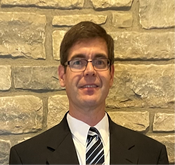
ODOT’s Quest to Design and Develop a Better Ecopassage for Herpetofauna-Matt Raymond
With the construction of the Nelsonville Bypass highway project, wildlife roadway mortality was unfortunately anticipated. The project incorporated several wildlife exclusion and underpass features to attempt to minimize and mitigate for this mortality. Follow up studies on an amphibian underpass installed on the newly constructed SR 78 near the project wetland mitigation complex found the underpass to be ineffectual. ODOT funded additional research at this location to design and construct a more effective small animal/herpetofauna underpass with the hopes that a proven successful design could provide a better tool for future use statewide. Matt Raymond, Ohio Department of Transportation Ecological Program Manager-B.S. in Environmental Biology, M.S. in Environmental Studies; 28 years of experience in ecological resource identification and characterization; 25 years of experience in ecological impact analysis, natural resource mitigation design and monitoring, document preparation and review, and ecological coordination for regulatory compliance. Unfortunately, stumbling down the path from biologist to bureaucrat.
With the construction of the Nelsonville Bypass highway project, wildlife roadway mortality was unfortunately anticipated. The project incorporated several wildlife exclusion and underpass features to attempt to minimize and mitigate for this mortality. Follow up studies on an amphibian underpass installed on the newly constructed SR 78 near the project wetland mitigation complex found the underpass to be ineffectual. ODOT funded additional research at this location to design and construct a more effective small animal/herpetofauna underpass with the hopes that a proven successful design could provide a better tool for future use statewide. Matt Raymond, Ohio Department of Transportation Ecological Program Manager-B.S. in Environmental Biology, M.S. in Environmental Studies; 28 years of experience in ecological resource identification and characterization; 25 years of experience in ecological impact analysis, natural resource mitigation design and monitoring, document preparation and review, and ecological coordination for regulatory compliance. Unfortunately, stumbling down the path from biologist to bureaucrat.
Field Trip Leaders:
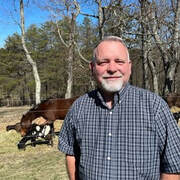
Field trip leader Thursday night- Rick Perkins
Rick works as an adjunct professor at Hocking College teaching Dendrology, Field Biology, and Interpretation classes, and recently retired from the role of Director of Camp Oty’Okwa, a year-round Big Brother Big Sisters of Central Ohio children’s camp in Hocking County. Earlier, he served a full career with the National Park Service, where he worked as Chief Ranger for Hopewell Culture National Historical Park in Ohio and Park Ranger at Isle Royale National Park and Glacier Bay National Park.
Rick works as an adjunct professor at Hocking College teaching Dendrology, Field Biology, and Interpretation classes, and recently retired from the role of Director of Camp Oty’Okwa, a year-round Big Brother Big Sisters of Central Ohio children’s camp in Hocking County. Earlier, he served a full career with the National Park Service, where he worked as Chief Ranger for Hopewell Culture National Historical Park in Ohio and Park Ranger at Isle Royale National Park and Glacier Bay National Park.
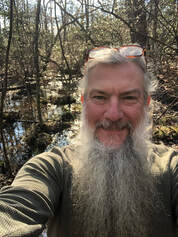
Field trip leader Friday night- Homer Elliott
Homer Elliott is a Wildlife and Natural Resources faculty member from the Hocking College School of Natural Resources in Athens County, Ohio, with a love for wetlands, especially vernal pools and wildlife waterholes. A passionate naturalist and educator, Homer has explored, studied, and been amazed by vernal pools and seeps and their macro and microflora and fauna in Ohio, Pennsylvania, Maryland, New Jersey, Delaware, and Vermont and has occasionally been lucky enough to be involved in aspects of their delineation, restoration, or construction. His educational path led him through Temple University, where he received his B.S. and started teaching in higher education. Homer ran the Temple University Native Plant Propagation Center in the 90s and early 2000s and nurtured thousands of trees that would provide the primary nutrient input to many riparian vernal pools through their leaves, creating vital wildlife habitats. Projects and consulting allowed Homer to become exposed to a wider variety of vernal pools, a diversity driven by different sources and regimes of water on different physiographic provinces from the coastal plain through the piedmont to the ridge and valley and plateaus. Homer’s educational path in Natural Resources then took him to the University of Vermont in Burlington on the shores of Lake Champlain in the shadow of Camel’s Hump, where cold springs may seem to extend the spring of certain vernal pools. Homer studied the impacts of acid rain at Hubbard Brook Experimental Forest in the Whites of New Hampshire while at UVM for his M.S. This educational path then led to Ohio to study at OU, which further ignited Homer’s passion for Appalachia and started a fascination with the Vernal Pools of the Hocking River and its tributaries of Monday and Sunday Creeks, as well as the river of Raccoon Creek in the Ohio Valley. Fourteen years later, here in the Hocking Hills, Homer hopes to find Fairy Shrimp and their ephemeral, fiery show of iridescence as they swim in the vernal pools of winter and early March.
Homer Elliott is a Wildlife and Natural Resources faculty member from the Hocking College School of Natural Resources in Athens County, Ohio, with a love for wetlands, especially vernal pools and wildlife waterholes. A passionate naturalist and educator, Homer has explored, studied, and been amazed by vernal pools and seeps and their macro and microflora and fauna in Ohio, Pennsylvania, Maryland, New Jersey, Delaware, and Vermont and has occasionally been lucky enough to be involved in aspects of their delineation, restoration, or construction. His educational path led him through Temple University, where he received his B.S. and started teaching in higher education. Homer ran the Temple University Native Plant Propagation Center in the 90s and early 2000s and nurtured thousands of trees that would provide the primary nutrient input to many riparian vernal pools through their leaves, creating vital wildlife habitats. Projects and consulting allowed Homer to become exposed to a wider variety of vernal pools, a diversity driven by different sources and regimes of water on different physiographic provinces from the coastal plain through the piedmont to the ridge and valley and plateaus. Homer’s educational path in Natural Resources then took him to the University of Vermont in Burlington on the shores of Lake Champlain in the shadow of Camel’s Hump, where cold springs may seem to extend the spring of certain vernal pools. Homer studied the impacts of acid rain at Hubbard Brook Experimental Forest in the Whites of New Hampshire while at UVM for his M.S. This educational path then led to Ohio to study at OU, which further ignited Homer’s passion for Appalachia and started a fascination with the Vernal Pools of the Hocking River and its tributaries of Monday and Sunday Creeks, as well as the river of Raccoon Creek in the Ohio Valley. Fourteen years later, here in the Hocking Hills, Homer hopes to find Fairy Shrimp and their ephemeral, fiery show of iridescence as they swim in the vernal pools of winter and early March.
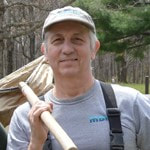
Lab Leader Saturday- Martin Knapp
Martin Knapp has been an Aquatic Ecologist with MBI since 2007. He is the lead macroinvertebrate taxonomist and is currently involved with macroinvertebrate sampling, identification, and report writing for MBI projects, including assessments in the Great Miami River, Mill Creek, and the Little Miami River basins in southwest Ohio, the Black River lacustruary, the Dupage River in Illinois, and the Elkhart River in Indiana. Past projects at MBI include statistical analyses of macroinvertebrate and diatom assemblages from wetlands, and macroinvertebrate identifications from Georgia streams. At Ohio EPA from 1981 until his retirement in 2007, he sampled macroinvertebrates throughout Ohio, performed bioassays on Ohio discharger effluents, coordinated biological and water quality assessments, wrote Water Quality Based Effluent Limit (WQBEL) reports, and developed a wetland invertebrate community index for Ohio’s wetland program. He received a B.S. and M.S. in Biology from the University of Akron, an M.A.S. in statistics from Ohio State University, and is currently enrolled at Columbus State Community College pursuing continuing education.
Martin Knapp has been an Aquatic Ecologist with MBI since 2007. He is the lead macroinvertebrate taxonomist and is currently involved with macroinvertebrate sampling, identification, and report writing for MBI projects, including assessments in the Great Miami River, Mill Creek, and the Little Miami River basins in southwest Ohio, the Black River lacustruary, the Dupage River in Illinois, and the Elkhart River in Indiana. Past projects at MBI include statistical analyses of macroinvertebrate and diatom assemblages from wetlands, and macroinvertebrate identifications from Georgia streams. At Ohio EPA from 1981 until his retirement in 2007, he sampled macroinvertebrates throughout Ohio, performed bioassays on Ohio discharger effluents, coordinated biological and water quality assessments, wrote Water Quality Based Effluent Limit (WQBEL) reports, and developed a wetland invertebrate community index for Ohio’s wetland program. He received a B.S. and M.S. in Biology from the University of Akron, an M.A.S. in statistics from Ohio State University, and is currently enrolled at Columbus State Community College pursuing continuing education.



